Constitutional monarchy
A constitutional monarchy is a form of monarchy in which the sovereign exercises authority in accordance with a written or unwritten constitution.[1] Constitutional monarchy differs from absolute monarchy (in which a monarch holds absolute power) for which constitutional monarchs are bound to exercise their powers and authorities within limits prescribed within an established legal framework. Constitutional monarchies range from countries such as Liechtenstein, Monaco, Morocco, Jordan, Kuwait and Bahrain, where the constitution grants substantial discretionary powers to the sovereign, to countries such as the United Kingdom, the Netherlands, Spain, Belgium, Sweden, Malaysia and Japan, where the monarch retains significantly less personal discretion in the exercise of their authority.

|
2 Several states constitutionally deemed to be multiparty republics are broadly described by outsiders as authoritarian states. This map presents only the de jure form of government, and not the de facto degree of democracy.

From left to right: Gustaf V, Haakon VII & Christian X.
.jpg.webp)
| Part of a series of articles on |
| Monarchy |
|---|
.svg.png.webp) |
| Politics portal |
| Part of the Politics series | ||||
| Basic forms of government | ||||
|---|---|---|---|---|
.svg.png.webp) | ||||
| Power source | ||||
|
|
||||
| Power ideology | ||||
|
|
||||
| Power structure | ||||
|
|
||||
|
| ||||
Constitutional monarchy may refer to a system in which the monarch acts as a non-party political head of state under the constitution, whether written or unwritten.[2] While most monarchs may hold formal authority and the government may legally operate in the monarch's name, in the form typical in Europe the monarch no longer personally sets public policy or chooses political leaders. Political scientist Vernon Bogdanor, paraphrasing Thomas Macaulay, has defined a constitutional monarch as "A sovereign who reigns but does not rule".[3]
In addition to acting as a visible symbol of national unity, a constitutional monarch may hold formal powers such as dissolving parliament or giving royal assent to legislation. However, the exercise of such powers may largely be exercises strictly in accordance with either written constitutional principles or unwritten constitutional conventions, rather than any personal political preference imposed by the sovereign. In The English Constitution, British political theorist Walter Bagehot identified three main political rights which a constitutional monarch may freely exercise: the right to be consulted, the right to encourage, and the right to warn. Many constitutional monarchies still retain significant authorities or political influence, however, such as through certain reserve powers and who may also play an important political role.
The United Kingdom and the other Commonwealth realms are all constitutional monarchies in the Westminster system of constitutional governance. Two constitutional monarchies – Malaysia and Cambodia – are elective monarchies, wherein the ruler is periodically selected by a small electoral college.
Strongly limited constitutional monarchies may sometimes be referred to as crowned republics by certain commentators.
The concept of executive constitutional monarch identifies constitutional monarchies with fewer parliamentary powers.[4] As a result, constitutional monarchies may also be referred to as 'parliamentary monarchies' to differentiate them from executive constitutional monarchies.[5]
History
The oldest constitutional monarchy dating back to ancient times was that of the Hittites. They were an ancient Anatolian people that lived during the Bronze Age whose king or queen had to share their authority with an assembly, called the Panku, which was the equivalent to a modern-day deliberative assembly or a legislature. Members of the Panku came from scattered noble families who worked as representatives of their subjects in an adjutant or subaltern federal-type landscape.[6][7]
England, Scotland and the United Kingdom
In the Kingdom of England, the Glorious Revolution of 1688 led to a constitutional monarchy restricted by laws such as the Bill of Rights 1689 and the Act of Settlement 1701, although limits on the power of the monarch ("a limited monarchy") are much older than that (see Magna Carta). At the same time, in Scotland, the Convention of Estates enacted the Claim of Right Act 1689, which placed similar limits on the Scottish monarchy.
Although Queen Anne was the last monarch to veto an Act of Parliament when, on 11 March 1708, she blocked the Scottish Militia Bill, Hanoverian monarchs continued to selectively dictate government policies. For instance King George III constantly blocked Catholic Emancipation, eventually precipitating the resignation of William Pitt the Younger as prime minister in 1801.[8] The sovereign's influence on the choice of prime minister gradually declined over this period, King William IV being the last monarch to dismiss a prime minister, when in 1834 he removed Lord Melbourne as a result of Melbourne's choice of Lord John Russell as Leader of the House of Commons.[9][10] Queen Victoria was the last monarch to exercise real personal power, but this diminished over the course of her reign. In 1839, she became the last sovereign to keep a prime minister in power against the will of Parliament when the Bedchamber crisis resulted in the retention of Lord Melbourne's administration.[11] By the end of her reign, however, she could do nothing to block the unacceptable (to her) premierships of William Gladstone, although she still exercised power in appointments to the Cabinet, for example in 1886 preventing Gladstone's choice of Hugh Childers as War Secretary in favour of Sir Henry Campbell-Bannerman.[12]
Today, the role of the British monarch is by convention effectively ceremonial.[13] Instead, the British Parliament and the Government – chiefly in the office of Prime Minister of the United Kingdom – exercise their powers under "Royal (or Crown) Prerogative": on behalf of the monarch and through powers still formally possessed by the Monarch.[14][15]
No person may accept significant public office without swearing an oath of allegiance to the Queen.[16] With few exceptions, the monarch is bound by constitutional convention to act on the advice of the Government.
Continental Europe
Poland developed the first constitution for a monarchy in continental Europe, with the Constitution of May 3, 1791; it was the second single-document constitution in the world just after the first republican Constitution of the United States. Constitutional monarchy also occurred briefly in the early years of the French Revolution, but much more widely afterwards. Napoleon Bonaparte is considered the first monarch proclaiming himself as an embodiment of the nation, rather than as a divinely appointed ruler; this interpretation of monarchy is germane to continental constitutional monarchies. German philosopher Georg Wilhelm Friedrich Hegel, in his work Elements of the Philosophy of Right (1820), gave the concept a philosophical justification that concurred with evolving contemporary political theory and the Protestant Christian view of natural law.[17] Hegel's forecast of a constitutional monarch with very limited powers whose function is to embody the national character and provide constitutional continuity in times of emergency was reflected in the development of constitutional monarchies in Europe and Japan.[17]
Executive monarchy versus ceremonial monarchy
There exist at least two different types of constitutional monarchies in the modern world — executive and ceremonial. In executive monarchies, the monarch wields significant (though not absolute) power. The monarchy under this system of government is a powerful political (and social) institution. By contrast, in ceremonial monarchies, the monarch holds little or no actual power or direct political influence, though they frequently have a great deal of social and cultural influence.
Executive constitutional monarchies: Bhutan, Bahrain, Jordan, Kuwait, Liechtenstein, Monaco, Morocco, and Tonga.
Ceremonial constitutional monarchies (Crowned Democracy): Andorra, Antigua and Barbuda, Australia, The Bahamas, Barbados, Belgium, Belize, Cambodia, Canada, Denmark, Grenada, Jamaica, Japan, Lesotho, Luxembourg, Malaysia, the Netherlands, New Zealand, Norway, Papua New Guinea, Saint Kitts and Nevis, Saint Lucia, Saint Vincent and the Grenadines, Solomon Islands, Spain, Sweden, Thailand, Tuvalu and the United Kingdom.
Ceremonial and executive monarchy, should not be confused with democratic and non-democratic monarchical systems. For example, in Liechtenstein and Monaco, the ruling monarchs wield significant executive power. However, they are not absolute monarchs, and these countries are generally reckoned as democracies.
Modern constitutional monarchy
As originally conceived, a constitutional monarch was head of the executive branch and quite a powerful figure even though his or her power was limited by the constitution and the elected parliament. Some of the framers of the U.S. Constitution may have envisioned the president as an elected constitutional monarch, as the term was then understood, following Montesquieu's account of the separation of powers.[18]
The present-day concept of a constitutional monarchy developed in the United Kingdom, where the democratically elected parliaments, and their leader, the prime minister, exercise power, with the monarchs having ceded power and remaining as a titular position. In many cases the monarchs, while still at the very top of the political and social hierarchy, were given the status of "servants of the people" to reflect the new, egalitarian position. In the course of France's July Monarchy, Louis-Philippe I was styled "King of the French" rather than "King of France."
Following the Unification of Germany, Otto von Bismarck rejected the British model. In the constitutional monarchy established under the Constitution of the German Empire which Bismarck inspired, the Kaiser retained considerable actual executive power, while the Imperial Chancellor needed no parliamentary vote of confidence and ruled solely by the imperial mandate. However, this model of constitutional monarchy was discredited and abolished following Germany's defeat in the First World War. Later, Fascist Italy could also be considered a constitutional monarchy, in that there was a king as the titular head of state while actual power was held by Benito Mussolini under a constitution. This eventually discredited the Italian monarchy and led to its abolition in 1946. After the Second World War, surviving European monarchies almost invariably adopted some variant of the constitutional monarchy model originally developed in Britain.
Nowadays a parliamentary democracy that is a constitutional monarchy is considered to differ from one that is a republic only in detail rather than in substance. In both cases, the titular head of state—monarch or president—serves the traditional role of embodying and representing the nation, while the government is carried on by a cabinet composed predominantly of elected Members of Parliament.
However, three important factors distinguish monarchies such as the United Kingdom from systems where greater power might otherwise rest with Parliament. These are: the Royal Prerogative under which the monarch may exercise power under certain very limited circumstances; Sovereign Immunity under which the monarch may do no wrong under the law because the responsible government is instead deemed accountable; and the monarch may not be subject to the same taxation or property use restrictions as most citizens. Other privileges may be nominal or ceremonial (e.g., where the executive, judiciary, police or armed forces act on the authority of or owe allegiance to the Crown).
Today slightly more than a quarter of constitutional monarchies are Western European countries, including the United Kingdom, Spain, the Netherlands, Belgium, Norway, Denmark, Luxembourg, Monaco, Liechtenstein and Sweden. However, the two most populous constitutional monarchies in the world are in Asia: Japan and Thailand. In these countries, the prime minister holds the day-to-day powers of governance, while the monarch retains residual (but not always insignificant) powers. The powers of the monarch differ between countries. In Denmark and in Belgium, for example, the Monarch formally appoints a representative to preside over the creation of a coalition government following a parliamentary election, while in Norway the King chairs special meetings of the cabinet.
In nearly all cases, the monarch is still the nominal chief executive but is bound by convention to act on the advice of the Cabinet. Only a few monarchies (most notably Japan and Sweden) have amended their constitutions so that the monarch is no longer even the nominal chief executive.
There are sixteen constitutional monarchies under Queen Elizabeth II, which are known as Commonwealth realms.[19] Unlike some of their continental European counterparts, the Monarch and her Governors-General in the Commonwealth realms hold significant "reserve" or "prerogative" powers, to be wielded in times of extreme emergency or constitutional crises, usually to uphold parliamentary government. An instance of a Governor-General exercising such power occurred during the 1975 Australian constitutional crisis, when the Australian Prime Minister, Gough Whitlam, was dismissed by the Governor-General. The Australian Senate had threatened to block the Government's budget by refusing to pass the necessary appropriation bills. On November 11, 1975, Whitlam intended to call a half-Senate election in an attempt to break the deadlock. When he sought the Governor-General's approval of the election, the Governor-General instead dismissed him as Prime Minister. Shortly after that installed leader of the opposition Malcolm Fraser in his place. Acting quickly before all parliamentarians became aware of the government change, Fraser and his allies secured passage of the appropriation bills, and the Governor-General dissolved Parliament for a double dissolution election. Fraser and his government were returned with a massive majority. This led to much speculation among Whitlam's supporters as to whether this use of the Governor-General's reserve powers was appropriate, and whether Australia should become a republic. Among supporters of constitutional monarchy, however, the experience confirmed the monarchy's value as a source of checks and balances against elected politicians who might seek powers in excess of those conferred by the constitution, and ultimately as a safeguard against dictatorship.
In Thailand's constitutional monarchy, the monarch is recognized as the Head of State, Head of the Armed Forces, Upholder of the Buddhist Religion, and Defender of the Faith. The immediate former King, Bhumibol Adulyadej, was the longest-reigning monarch in the world and in all of Thailand's history, before passing away on 13 October 2016.[20] Bhumibol reigned through several political changes in the Thai government. He played an influential role in each incident, often acting as mediator between disputing political opponents. (See Bhumibol's role in Thai Politics.) Among the powers retained by the Thai monarch under the constitution, lèse majesté protects the image of the monarch and enables him to play a role in politics. It carries strict criminal penalties for violators. Generally, the Thai people were reverent of Bhumibol. Much of his social influence arose from this reverence and from the socioeconomic improvement efforts undertaken by the royal family.
In the United Kingdom, a frequent debate centres on when it is appropriate for a British monarch to act. When a monarch does act, political controversy can often ensue, partially because the neutrality of the crown is seen to be compromised in favour of a partisan goal, while some political scientists champion the idea of an "interventionist monarch" as a check against possible illegal action by politicians. For instance, the monarch of the United Kingdom can theoretically exercise an absolute veto over legislation by withholding royal assent. However, no monarch has done so since 1708, and it is widely believed that this and many of the monarch's other political powers are lapsed powers.
There are currently 43 monarchies worldwide.
List of current constitutional monarchies
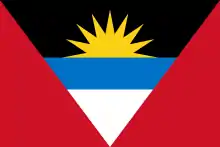 Antigua and Barbuda
Antigua and Barbuda.svg.png.webp) Australia
Australia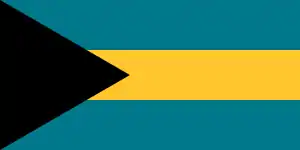 The Bahamas
The Bahamas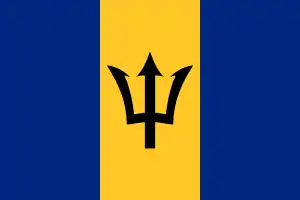 Barbados (aims at becoming a republic in Nov. 2021)
Barbados (aims at becoming a republic in Nov. 2021).svg.png.webp) Belgium
Belgium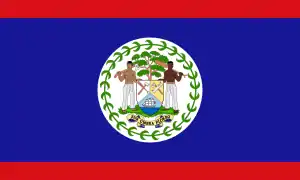 Belize
Belize Bhutan
Bhutan Cambodia
Cambodia.svg.png.webp) Canada
Canada Denmark
Denmark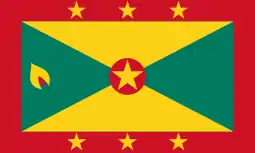 Grenada
Grenada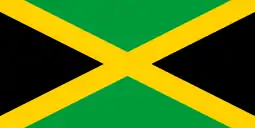 Jamaica
Jamaica Japan
Japan Jordan
Jordan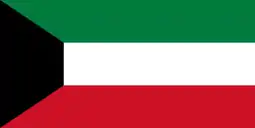 Kuwait
Kuwait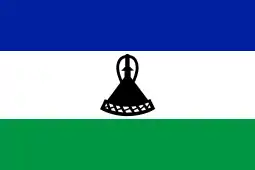 Lesotho
Lesotho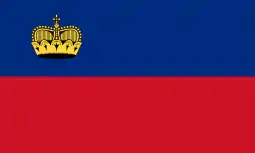 Liechtenstein
Liechtenstein Luxembourg
Luxembourg Malaysia
Malaysia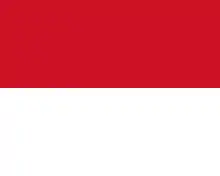 Monaco
Monaco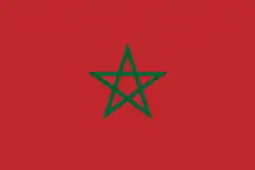 Morocco
Morocco The Netherlands
The Netherlands New Zealand
New Zealand Norway
Norway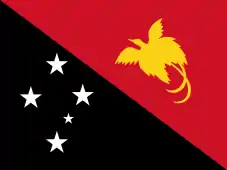 Papua New Guinea
Papua New Guinea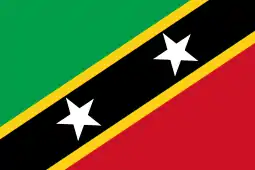 Saint Kitts and Nevis
Saint Kitts and Nevis Saint Lucia
Saint Lucia Saint Vincent and the Grenadines
Saint Vincent and the Grenadines Solomon Islands
Solomon Islands Spain
Spain Sweden
Sweden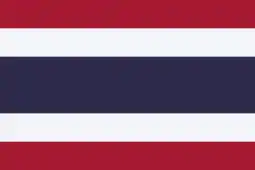 Thailand
Thailand Tonga
Tonga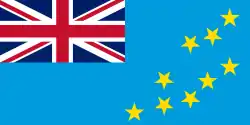 Tuvalu
Tuvalu United Arab Emirates
United Arab Emirates United Kingdom
United Kingdom
Former constitutional monarchies
- The Anglo-Corsican Kingdom was a brief period in the history of Corsica (1794–1796) when the island broke with Revolutionary France and sought military protection from Great Britain. Corsica became an independent kingdom under George III of the United Kingdom, but with its own elected parliament and a written constitution guaranteeing local autonomy and democratic rights.
- Brazil from 1822, with the proclamation of independence and rise of the Empire of Brazil by Pedro I of Brazil to 1889, when Pedro II was deposed by a military coup.
- Kingdom of Bulgaria until 1946 when Tsar Simeon was deposed by the communist assembly.
- Many Commonwealth republics were constitutional monarchies for some period after their independence, including South Africa (1910-1964), Ceylon from 1948 to 1972 (now Sri Lanka), Fiji (1970–1987), Gambia (1965–1970), Ghana (1957–1960), Guyana (1966–1970), and Trinidad and Tobago (1962–1976).
- The Grand Principality of Finland was a constitutional monarchy though its ruler, Alexander I, was simultaneously an autocrat and absolute ruler in Russia.
- France, several times from 1789 through the 19th century. The transformation of the Estates General of 1789 into the National Assembly initiated an ad-hoc transition from the absolute monarchy of the Ancien Régime to a new constitutional system. France formally became an executive constitutional monarchy with the promulgation of the French Constitution of 1791, which took effect on 1 October of that year. This first French constitutional monarchy was short-lived, ending with the overthrow of the monarchy and establishment of the French First Republic after the Insurrection of 10 August 1792. Several years later, in 1804, Napoleon Bonaparte proclaimed himself Emperor of the French in what was ostensibly a constitutional monarchy, though modern historians often call his reign as an absolute monarchy. The Bourbon Restoration (under Louis XVIII and Charles X), the July Monarchy (under Louis-Philippe), and the Second Empire (under Napoleon III) were also constitutional monarchies, although the power of the monarch varied considerably between them and sometimes within them.
- The German Empire from 1871 to 1918, (as well as earlier confederations, and the monarchies it consisted of) was also a constitutional monarchy—see Constitution of the German Empire.
- Greece until 1973 when Constantine II was deposed by the military government. The decision was formalized by a plebiscite December 8, 1974.
- Hawaii, which was an absolute monarchy from its founding in 1810, transitioned to a constitutional monarchy in 1840 when King Kamehameha III promulgated the kingdom's first constitution. This constitutional form of government continued until the monarchy was overthrown in an 1893 coup.
- The Kingdom of Hungary. In 1848–1849 and 1867–1918 as part of Austria-Hungary. In the interwar period (1920–1944) Hungary remained a constitutional monarchy without a reigning monarch.
- Iceland. The Act of Union, a December 1, 1918 agreement with Denmark, established Iceland as a sovereign kingdom united with Denmark under a common king. Iceland abolished the monarchy and became a republic on June 17, 1944 after the Icelandic constitutional referendum, May 24, 1944.
- India was a constitutional monarchy, with George VI as head of state and the Earl Mountbatten as governor-general, for a brief period between gaining its independence from the British on August 15, 1947 and becoming a republic when it adopted its constitution on January 26, 1950, henceforth celebrated as Republic Day.
- Iran under Mohammad Reza Shah Pahlavi was a constitutional monarchy, which had been originally established during the Persian Constitutional Revolution in 1906.
- Italy until June 2, 1946, when a referendum proclaimed the end of the Kingdom and the beginning of the Republic.
- The Kingdom of Laos was a constitutional monarchy until 1975, when Sisavang Vatthana was forced to abdicate by the communist Pathet Lao.
- Malta was a constitutional monarchy with Elizabeth II as Queen of Malta, represented by a Governor-General appointed by her, for the first ten years of independence from 21 September 1964 to the declaration of the Republic of Malta on 13 December 1974.
- Mexico was twice an Empire. The First Mexican Empire was from May 19, 1822, to March 19, 1823, with Agustín de Iturbide serving as emperor. Then, with the help of the Austrian and Spanish crowns, Napoleon III of France installed Maximilian of Austria as Emperor of Mexico. This attempt to create a European-style monarchy lasted three years, from 1864 to 1867.
- Montenegro until 1918 when it merged with Serbia and other areas to form Yugoslavia.
- Nepal until May 28, 2008, when King Gyanendra was deposed, and the Federal Democratic Republic of Nepal was declared.
- Ottoman Empire from 1876 until 1878 and again from 1908 until the dissolution of the empire in 1922.
- Pakistan was a constitutional monarchy for a brief period between gaining its independence from the British on August 14, 1947 and becoming a republic when it adopted the first Constitution of Pakistan on March 23, 1956. The Dominion of Pakistan had a total of two monarchs (George VI and Elizabeth II) and four Governor-Generals (Muhammad Ali Jinnah being the first). Republic Day (or Pakistan Day) is celebrated every year on 23 March to commemorate the adoption of its Constitution and the transition of the Dominion of Pakistan to the Islamic Republic of Pakistan.
- The Kingdom of Afghanistan was a constitutional monarchy under Mohammad Zahir Shah until 1973.
- The Polish–Lithuanian Commonwealth, formed after the Union of Lublin in 1569 and lasting until the final partition of the state in 1795, operated much like many modern European constitutional monarchies (into which it was officially changed by the establishment of the Constitution of May 3, 1791, which historian Norman Davies calls "the first constitution of its kind in Europe").[21] The legislators of the unified state truly did not see it as a monarchy at all, but as a republic under the presidency of the King . Poland–Lithuania also followed the principle of Rex regnat et non gubernat, had a bicameral parliament, and a collection of entrenched legal documents amounting to a constitution along the lines of the modern United Kingdom. The King was elected, and had the duty of maintaining the people's rights.
- Kingdom of Albania from 1928 until 1939, Albania was a Constitutional Monarchy ruled by the House of Zogu, King Zog I.
- Portugal was a monarchy since 1139 and a constitutional monarchy from 1822 to 1828, and again from 1834 until 1910, when Manuel II was overthrown by a military coup. From 1815 to 1825 it was part of the United Kingdom of Portugal, Brazil and the Algarves which was a constitutional monarchy for the years 1820–23.
- Kingdom of Romania From its establishment in 1881 until 1947 when Michael I was forced to abdicate by the communists.
- Kingdom of Serbia from 1882 until 1918, when it merged with the State of Slovenes, Croats and Serbs into the unitary Yugoslav Kingdom, that was led by the Serbian Karadjordjevic dynasty.
- Trinidad and Tobago was a constitutional monarchy with Elizabeth II as Queen of Trinidad and Tobago, represented by a Governor-General appointed by her, for the first fourteen years of independence from 31 August 1962 to the declaration of the Republic of Trinidad and Tobago on 1 August 1976. Republic Day is celebrated every year on 24 September.
- Yugoslavia from 1918 (as Kingdom of Serbs, Croats and Slovenes) until 1929 and from 1931 (as Kingdom of Yugoslavia) until 1944 when under pressure from the Allies Peter II recognized the communist government.
Unique constitutional monarchies
- Andorra is a diarchy, being headed by two co-princes: the bishop of Urgell and the president of France.
- Andorra, Monaco and Liechtenstein are the only countries with reigning princes.
- Belgium is the only remaining explicit popular monarchy, the formal title of its king being king of the Belgians rather than king of Belgium . Historically, several defunct constitutional monarchies followed this model; the Belgian formulation is recognized to have been modelled on the title "King of the French" the Charter of 1830 granted the monarch of the July Monarchy.
- Japan is the only country remaining with an emperor.[22]
- Luxembourg is the only country remaining with a grand duke.
- Malaysia is a federal country with an elective monarchy, the Yang di-Pertuan Agong, being selected from among nine state rulers who are also constitutional monarchs themselves.
- United Arab Emirates is a federal country with an elective monarchy, the President or Ra'is, being selected from among seven emirates rulers who are absolute monarchs.
- Yogyakarta Sultanate and Pakualaman Principality are two Monarchies that remain in the Republic of Indonesia. When Indonesia proclaimed independence from the Netherlands, both Kingdoms gave up their state status and joined the Republic of Indonesia, then the two kingdoms merged into the Special Region of Yogyakarta. The Special Region is governed by Sultan Hamengkubuwono as the Governor and Prince Paku Alam as the Vice Governor.
References
Citations
- Blum, Cameron & Barnes 1970, pp. 2Nnk67–268.
- Kurian 2011, p. .
- Bogdanor 1996, pp. 407–422.
- Anckar, Carsten; Akademi, Åbo (2016). "Semi presidential systems and executive constitutional monarchies: A historical assessment of executive power-sharing". European Consortium for Political Research (ECPR). Retrieved 2019-08-14.
- Grote, Rainer. "Parliamentary Monarchy". Oxford Constitutional Law. Max Planck Encyclopedia of Comparative Constitutional Law [MPECCoL]. Retrieved 17 August 2019.
- "The Hittites", smie.co, September 12, 2008
- Akurgal 2001, p. 118.
- Hague, William (2004). William Pitt the Younger (1st ed.). London: HarperCollins. pp. 469–72. ISBN 0007147198.
- Hurd, Douglas (2007). Robert Peel - a biography (1st ed.). London: Weidenfeld & Nicolson. pp. 169–70. ISBN 9780297848448.
- Mitchell, L.G. (1997). Lord Melbourne 1779-1848 (1st ed.). New York: Oxford University Press. p. 147. ISBN 0198205929.
- Mitchell, L.G. (1997). Lord Melbourne 1779-1848 (1st ed.). New York: Oxford University Press. pp. 241–2. ISBN 0198205929.
- Wilson, John (1973). CB - A life of Sir Henry Campbell-Bannerman (1st ed.). London: Constable and Company Limited. pp. 161–2. ISBN 009458950X.
- Royal Household staff 2015a.
- Dunt 2015.
- Parliamentary staff 2010.
- Sear 2001, p. 3.
- Hegel 1991, p. .
- Montesquieu 1924, p. .
- Royal Household staff 2015b.
- Dewan, Angela. "Thai King Bhumibol Adulyadej dies at 88". CNN Regions+. CNN. Retrieved 13 October 2016.
- Davies 1996, p. 699.
- "The Imperial Institution - The Imperial Household Agency". www.kunaicho.go.jp.
Sources
- Akurgal, Ekrem (2001), The Hattian and Hittite civilizations, Ankara: Turkish Ministry of Culture, p. 118, ISBN 975-17-2756-1
- Blum, Jerome; Cameron, Rondo; Barnes, Thomas G. (1970), The European World, 1, Boston: Little, Brown, pp. 267–268, OCLC 76819
- Bogdanor, Vernon (1996), "The Monarchy and the Constitution", Parliamentary Affairs, 49 (3): 407–422, doi:10.1093/pa/49.3.407 — excerpted from Bogdanor, Vernon (1995), The Monarchy and the Constitution, Oxford University Press
- Boyce, Peter (2008), The Queen's Other Realms, Annandale: Federation Press, p. 1, ISBN 978-1-86287-700-9
- Davies, Norman (1996), Europe: A History, Oxford University Press, p. 699, ISBN 0-19-820171-0
- Dunt, Ian, ed. (2015), Monarchy - Background, politics.co.uk, retrieved September 13, 2011
- Hegel, G. W. F. (1991) [1820], Wood, Allen W. (ed.), Elements of the Philosophy of Right, translated by Nisbet, H.B., Cambridge University Press, ISBN 0-521-34438-7 — originally published as Georg Friedrich Wilhelm Hegel, Philosophie des Rechts.
- Kurian, George Thomas (2011), "Constitutional Monarchy", The Encyclopedia of Political Science, CQ Press, doi:10.4135/9781608712434, ISBN 9781933116440
- McCannon, John (2006), Barron's how to Prepare for the AP World History Examination (2nd, illustrated ed.), Barron's Educational Serie, pp. 177–178, ISBN 9780764132711 — England and the Netherlands in the 17th and 18th centuries were parliamentary democracies.
- Montesquieu, Charles-Louis, Baron de (1924), The Spirit of Laws, Legal Classics Library
- Orr, Campbell, ed. (2002), Queenship in Britain, 1660-1837: Royal Patronage, Court Culture, and Dynastic Politics (illustrated ed.), Manchester University Press, p. 3, ISBN 9780719057694
- Crown Prerogative, Official website of the British Parliament, April 21, 2010, retrieved September 13, 2011
- Patmore, Glenn (2009), Choosing the Republic, University of New South Wales (UNSW) Press, p. 105, ISBN 978-1-74223-015-3
- What is constitutional monarchy?, Official website of the British Monarchy, December 12, 2015
- What is a Commonwealth realm?, Official website of the British Monarchy, December 12, 2015, archived from the original on 2010-12-02
- Schmitt, Carl (2008) [1928], Seitzer, Jeffrey (translator) (ed.), Constitutional Theory (illustrated ed.), Duke University Press, pp. 313–314, ISBN 9780822340119
- Sear, Chris (2001), Research Paper 01/116 (PDF), Official website of the British Parliament
Further reading
- Locke, John (2003) [1690], Shapiro, Ian (ed.), Two Treatises of Government and A Letter Concerning Toleration (with essays by John Dunn, Ruth W. Grant and Ian Shapiro ed.), New Haven: Yale University Press, ISBN 0-300-10017-5